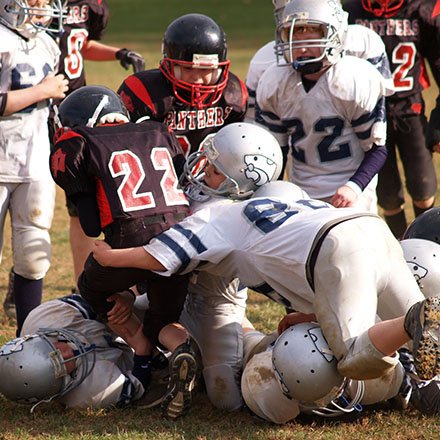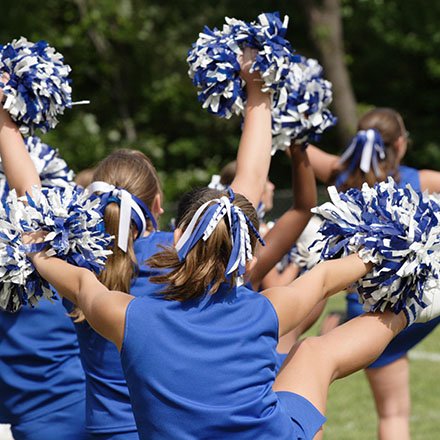STOP! Let Dr. Andrews Tell You a Story on Youth Sports Safety
By Kevin Scarbinsky
NCYS Communications
“Let me tell you a story.”
When you hear Dr. James R. Andrews say those words, it’s time to put down your cell phone, sit up in your chair and listen. When he speaks on the subject of youth sports safety, he’s more than the renowned orthopedic surgeon to the stars of professional sports. He’s a grandfather for whom keeping our youngest athletes on the playing field and out of the emergency room, in the game and off the operating table, has become his passion.
“I know this doctor who was covering a high school football game a few years ago.”
It’s the passion of the profession. You might see a member of the American Orthopedic Society for Sports Medicine on call in the fall on the sideline at a high school game on Friday … a college game on Saturday … an NFL game on Sunday. Or all three on consecutive days. It’s not just their hearts that are in the right place.
“There was a young kid, a sophomore, that wasn’t even a major player on the team. During one play, he was completely knocked out. He had suffered a concussion. They recognized that, thank goodness, and they took him over to the sideline and did the routine test, and they took him out of the game, obviously.”
Forget the walk-it-off, rub-some-dirt-on-it mentality. March is Brain Injury Awareness Month. Everyone involved in youth sports should know the facts. A concussion is a traumatic brain injury. As a youth sports coach or administrator, parent or other caregiver, if you suspect one of your athletes may have sustained a concussion, remove them from play or practice. Do not let them return until they’ve been cleared by a qualified healthcare provider. Learn the signs and symptoms here: https://bit.ly/3JgS6g7
“A short while later, all of a sudden, the doctor started hearing noise from behind him at the fence, people hitting the fence, hollering and screaming at him. They were not happy. They were demanding to know. ‘Why is our son not in the game? Why are you keeping our son out of the game?’ “
The pressure to play through pain is real. Dr. Andrews cited a benchmark national survey on youth sports commissioned by Safe Kids Worldwide and Johnson & Johnson. More than half of the young athletes surveyed said they had played hurt. Primary reasons: They didn’t want to let down their teammates or lose their place in the lineup. More than half of the coaches surveyed said they had felt pressure from parents or the athletes themselves to keep playing after getting hurt.
“So the doctor went over and tried to talk to the parents and get them settled down. Guess what profession both of the parents were in? I bet you can’t guess. Both of them were neurologists. So that’s what we all have to deal with.”
About two decades ago, more patients at younger ages started showing up at the Andrews Sports Medicine & Orthopaedic Center in Birmingham with injuries you would associate with older athletes, like torn knee ligaments and rotator cuffs, injuries that often required surgery.
“We started tracking youth sports injuries in the year 2000 when all of my examining rooms started filling up with young kids 13, 14, 15 years of age. I said, ‘My goodness. What’s happening to my practice? I didn’t know I was a pediatric orthopedic surgeon.’ “
That anecdotal observation combined with more formal research and more personal motivation as his grandchildren started playing sports and his own children began coaching them. To address what the Centers for Disease Control and Prevention (CDC) has classified as an epidemic of youth sports injuries, Andrews and AOSSM launched the STOP Sports Injuries campaign. They saw the need to provide athletes, parents and caregivers, coaches and administrators, with evidence-based resources to help them prevent injuries as much as possible and recognize and treat them as needed. The National Council of Youth Sports has partnered with AOSSM to deliver those STOP resources to the people who work with youth athletes every day.
“There’s one thing we hear all the time from these kids who were injured but kept playing: ‘It was an important game.’ At age 8. The epidemic is here. It continues to rise. I’ll leave you with this: ‘What could I do if I became we?’ “
###




